The Alhambra and Escher
Anyone who has seen examples of Islamic Art will remember the incredible patterns the craftsmen achieved. One of my favourite examples is The Alhambra, a Moorish palace and fortress located in Granada, Spain. It was originally constructed as a small fortress in AD 889 on the remains of Roman fortifications, and then largely ignored until its ruins were renovated and rebuilt in the mid-13th century by the Nasrid emir Mohammed ben Al-Ahmar of the Emirate of Granada, who built its current palace and walls. It was converted into a royal palace in 1333 by Yusuf I, Sultan of Granada.(Wikipedia). The awareness of composition and symmetry is breathtaking.
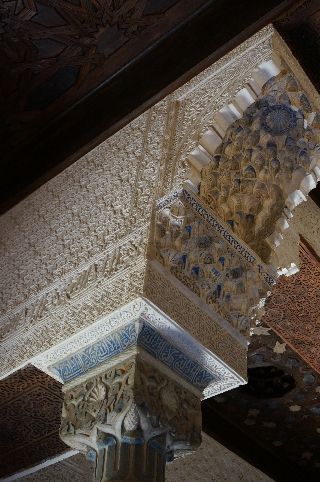
In Islamic art, geometry and rhythm reflects the spiritual world.
Therefore Islamic artists used geometric patterns to help them develop their own spiritual understanding and that of the viewers. The patterns used represented the Islamic principles of ‘Tawhid’ (the unity of all things) and ‘Mizan’ (order and balance), which are the laws of creation in Islam.
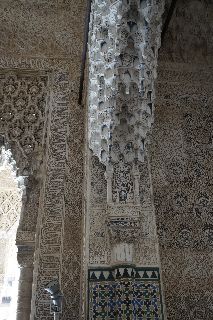
After visiting in 1922, M.C.Escher (from yesterday's blog) was fascinated by the intricacy and geometric artistry of the patterns sculpted into the stone walls and ceilings of the castle. Wood carvings are also used especially on the ceilings.
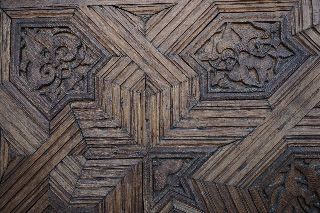
Escher revisited Alhambra in 1936 and from all accounts was inspired by The Lion's Court in particular.
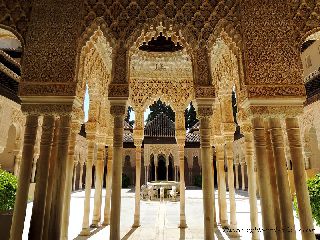
Importantly he became fascinated with the patterns that repeated endlessly in a kind of 2D universe and this lead to his obsession with tessellations becoming known as the Father of Tessellations.
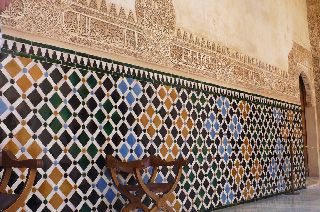
To understand a little about the importance of tessellations to Islamic Art I will quote Fatih Gelgi who wrote an article on
The Influence of Islamic Art on M.C. Escher. He said: Tessellations are one of the major components of Islamic art. Islamic artists mastered regular division of plane using, in particular, circles on triangular or square grids, because the circle – which has no beginning and no end and thus symbolizes infinity – was considered to be the most perfect geometric form. In mosques, where a wealth of these geometric patterns could be found, one could contemplate the infinite nature of God simply by looking at the walls or ceiling. http://www.fountainmagazine.com/Issue/detail/The-Influence-of-Islamic-Art-on-MC-Escher
Escher created 137 drawings based on the principle of tessellation. In his famous “Metamorphosis” series, Escher told a story by morphing images into a tessellated pattern and then slowly the pattern altered giving rise to a new image as seen in the example below. I have used Metamorphosis I as the Hero image for this Blog. It was done in 1937 as a woodcut printed on 2 sheets of paper. Then in 1940 Escher completed Metamorphosis II a woodcut in black, green and brown, printed from 20 blocks on 3 combined sheets.
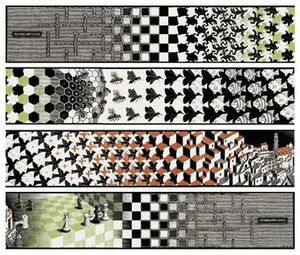
And finally Metamorphosis III which begins identically to Metamorphosis II, was completed in 1967 also a woodcut (second state) in red, green and reddish-brown. Printed from 33 blocks on 6 combined sheets. Mounted on canvas, partly coloured by hand.
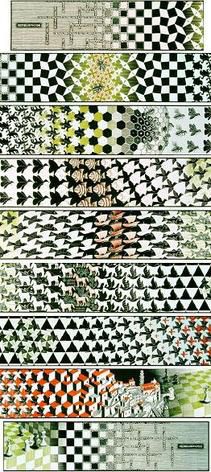
I could go on forever about tessellations as they can be found in many, many cultures and are a basic element in learning about perspective. They are fascinating and before we become mesmerised by them I'll sign off for today.
If you have become interested in mathematical art and tessellations check out the work of RobertFathauer a contemporary American creating interesting works.
